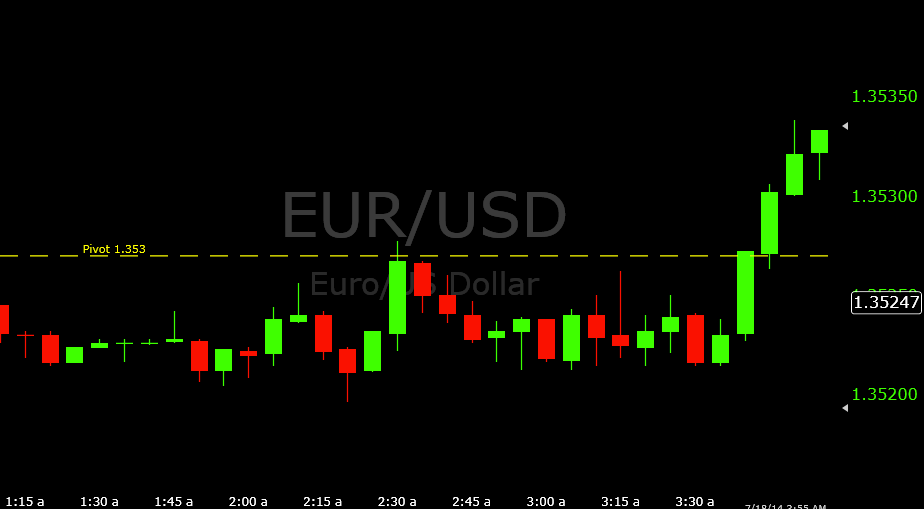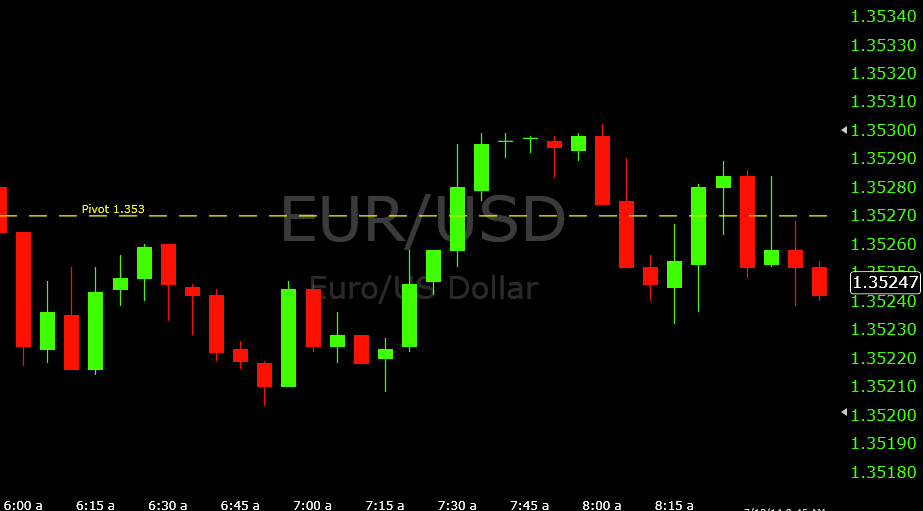Two Common Trading Pitfalls and How to Avoid Them
I did not take a trade last Friday while watching the EUR/USD given that nothing set up to my liking. But it was one of those days that could have turned out a lot worse if I was impatient and forced matters by taking trades that weren’t actually there. So I felt compelled to write about the subject of a couple major trading hazards and how pivotal it truly is to avoid them.
1. Not accounting for momentum
Like I posted in my previous article, not taking into account momentum is an easy way to get oneself into a trade that isn’t as actually robust of a set-up as it actually appears. “Momentum” basically means that more volume is entering the market and usually driving it in a particular direction. This often occurs during news releases when currency markets often adjust very rapidly in response to the news. As always, reference an economic calendar before you begin trading and understand when economic accouncements are going to be released. Nevertheless, these movements are often unexpected as well. Sometimes a bank makes a big transaction that drives up volume in the market.
In my case, since I trade using support and resistance levels in the market while taking into account price action, trend, and the somewhat obscure notion of “momentum,” one must also be mindful of increasing volume around these price levels. I’ll give an example from Friday’s trading:
In the above image, two cases are evident. Around 2:30, price made a move up to the daily pivot level on a strong bullish candle (at least relative to the surrounding candles). I would not have gotten into a trade even on a re-touch of the pivot level for the simple fact that the up-move was relatively strong.
So how do you tell when a market is gaining momentum or there’s an influx in volume? It’s usually the simple task of being able to tell that a candle is larger than the ones that preceded it in its recent price history. It doesn’t even necessarily need to be a candle denoting that the market is going in a particular direction. Candles with small bodies and large wicks are often just as demonstrative of the phenomenon. Even if these large wicks demonstrate a rejection of a price level that you might have interest in trading. The extra volume and volatility entering the market may very well have the capability of wiping out that price level altogether. For a reference, consider the two bearish/red candles in the image below:
Pivot was being tested and was rejected twice. Normally I’d take that as a good signal. But given how much more volume had recently entered the market at this point, I felt most comfortable sitting out that particular trade. Even if you’re getting the wicks there’s still a good chance that the market is inclined to break below that level. And this trade would not have worked out. Of course, it can if you’re fortunate enough to get an expiry on the green candle that held above the pivot. But the set-up is simply too much of a 50-50 gamble for me overall, so I passed on the opportunity.
When volume builds in a market, price levels simply do not hold as well. So if you can transparently observe that a price movement is gaining steam – market moving faster, candles getting larger – I’d advise that you’re probably best off staying out of the market at that particular time.
2. Trading just the price level
When I say that my strategy is fundamentally based on support and resistance, that of course never means simply trade a price level of interest expecting it to work. Because other things like price action and trend are very important subsidiary factors. The actual price action – that is, analysis of the candlesticks that represent historical price movement – is the one leading indicator that you have. Moreover, trading according to the trend – the market’s bias for one direction or the other – has been perhaps the most effective basic trading strategy ever devised. Also accounting for increases in volume/momentum, buyer/seller dynamics, this kind of stuff, also weighs in heavily.
Consider once again the first image in this post (also posted below):
The big bullish/green candle approaching the pivot level toward the very right-hand side of the image exemplifies both of the main talking points of this article. There was the previous resistance created from the move up to pivot at 2:30AM EST. The pivot level and previous price history I guess you could say technically supported a trade here. But if you simply get into the trade on the touch of the level, without consideration to any of the aforementioned factors, you can see how badly the trade would’ve panned out. Never should one trade just the price level. Factors like price action, trend, volume, momentum, etc. must also weigh in in helping make one’s decision.
This next image represented trading from later on in the day:
As can be plainly observed. Trading just the pivot level in this case would have turned into some very poor trades, as price was meandering up and below the level. And in several cases, price blew through it with above-average influxes of volume either on the candle that created the breach or the one directly before it.
Then, of course, you get the ginormous candles from massive financial transactions that absolutely dwarf the ones comprising the earlier market hours. It makes the previous market you were trading seem very non-descript by comparison. These are the times when you simply wait for the market to die down a bit and wait for some return to homeostasis.
Obviously, when you’re getting candles like these, you never ever want to try to bet on the market flipping course at some price level marked off on the chart. You merely wait it out and go from there.
For those who frequent my blog, how I trade seems very repetitive in nature. And that’s often the way it should be. That doesn’t mean you can’t adapt, learn, and integrate new things into your craft, as it’s never good to become intellectually calcified and doggedly approach something from the same stance ad infinitum. But doing the same thing over and over again and doing it well and effectively does help to breed success. Same thing for a surgeon repeating the same surgery thousands of times or a baseball pitcher using the same mechanics in his delivery. Repetition helps in becoming very good at something. And the neat thing about trading in a way is that no two market situations are naturally ever the same. But if you’re applying an effective strategy toward the markets in all circumstances, the fact that the market is so inherently dynamic should not alter long-term success.



